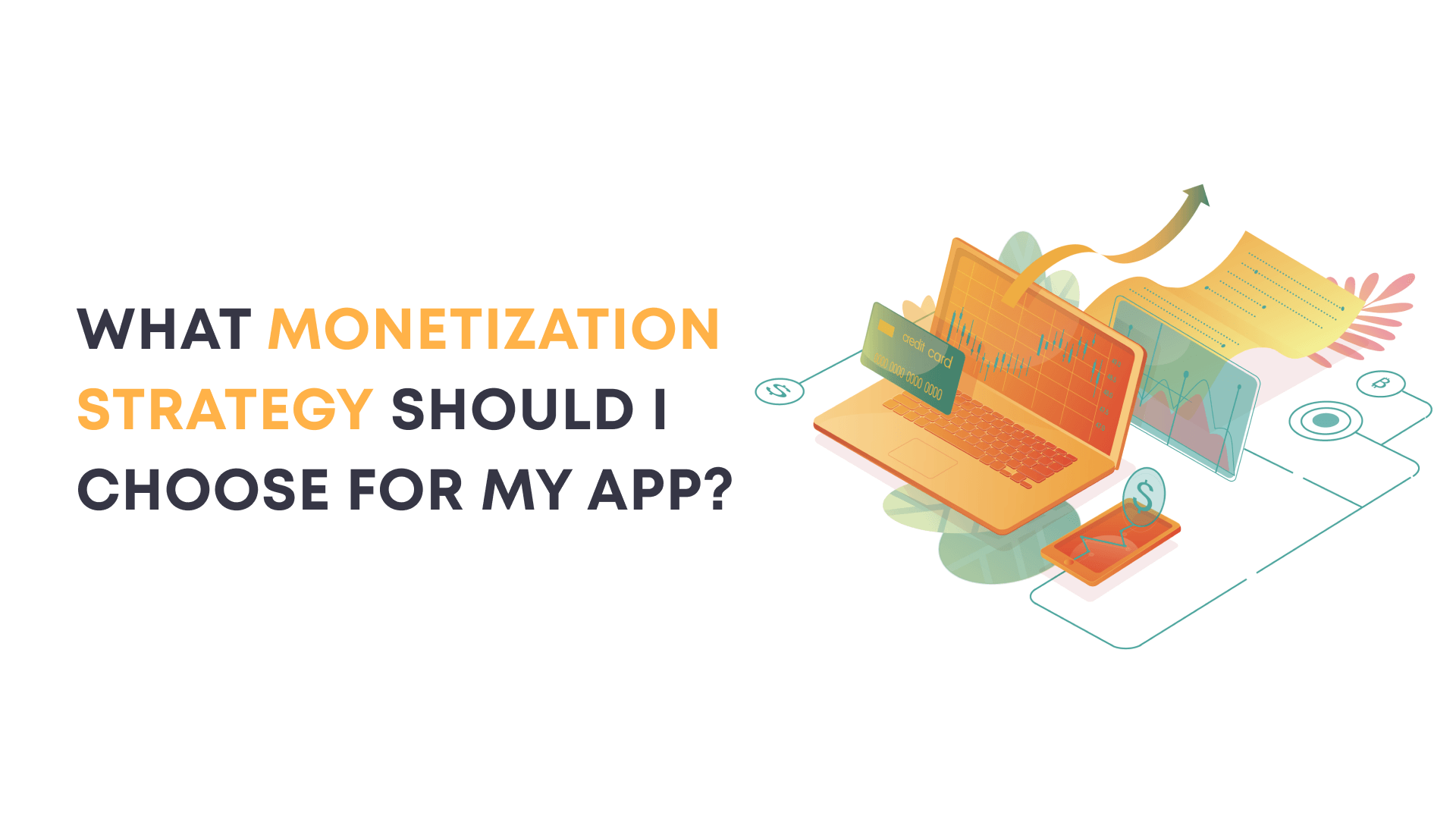Before getting any application off the ground, you should select the perfect project monetization strategy right from the get-go. That way, product revenue will be seamlessly integrated into the user experience.
This guide is everything you need to develop and implement a monetization strategy that pleases your customers while ensuring your business is profitable. You’ll learn the pros and cons of different models and how to generate impressive revenue from your project.
App monetization statistics
There’s much money to be made on mobile, as the stats reveal. Global consumer spending on applications approached $65 billion in the first half of 2021, a 24.8% increase compared with the year-ago period. Consumers downloaded over 200 billion applications last year and spent billions within those apps. Also, note that 90% of all mobile internet time accounts for apps. There are no doubt consumers are enthusiastic about the mobile space.
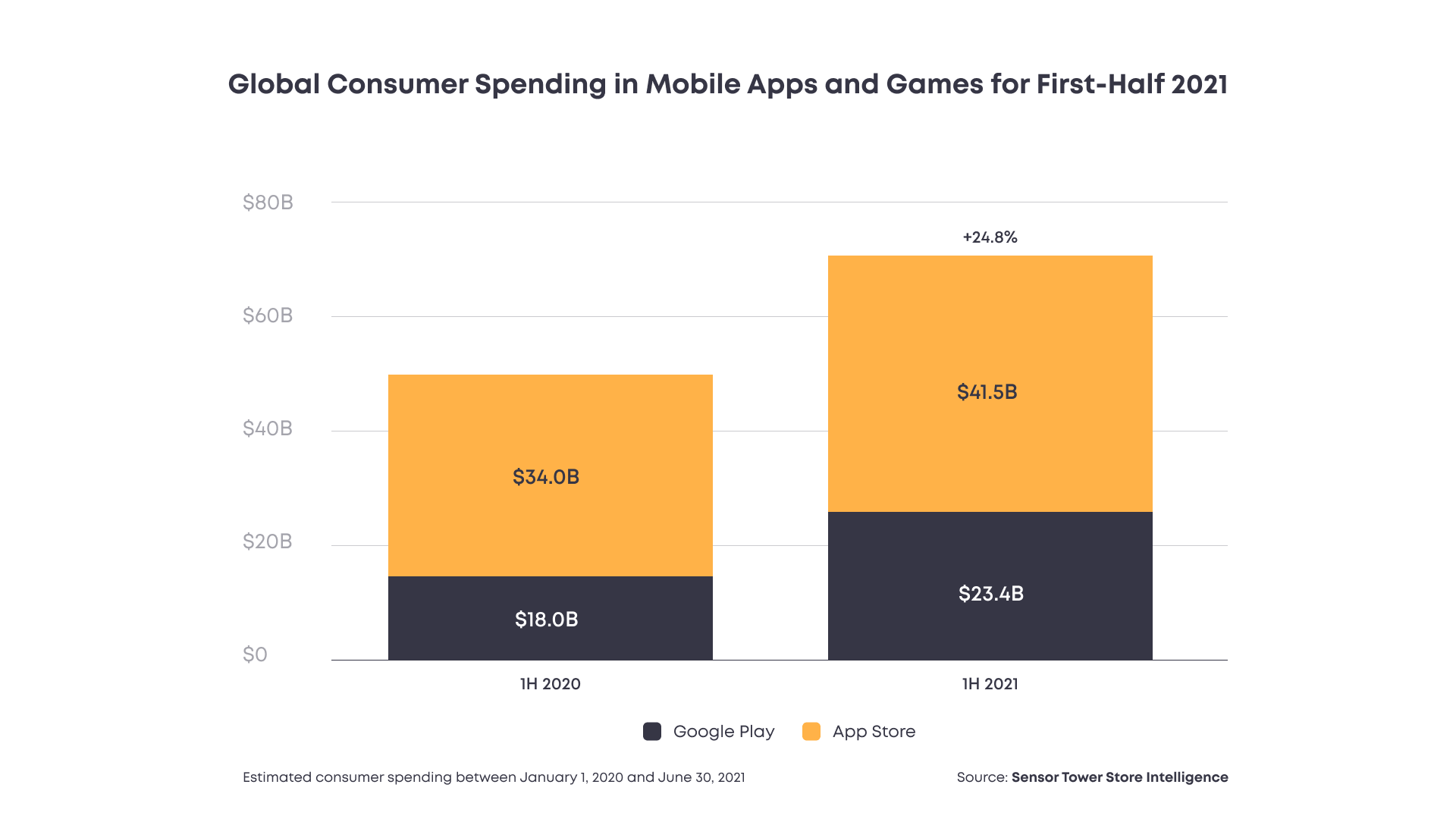
Even though over 90% of all mobile applications are free, the market generates revenues and is projected to grow further. The question is, how? So, let’s discover how to monetize your product.
An overview of the top monetization strategies
Monetization is vital when you plan to launch an application and needs to be more than an afterthought. It would help if you considered how your application would generate revenue from the beginning of the project. Once you’ve ensured that your business has laid the groundwork for monetization, it’s time to choose a strategy. So let’s explore the revenue models.
1. In-app purchases
If your product is free, in-app purchases are a fuss-free monetization idea that boosts the user experience. As almost 97% of all Google Play products, this method has become very widespread. The strategy offers a way to gain revenue by selling virtual or physical items, which is particularly efficient for gaming applications.
Users spent $85.3 billion on in-app purchases in 2020, making it an excellent way to boost your app’s revenue. So when done right, this strategy allows you to deliver real value to the consumers, resulting in a win for both the user and the business owner.
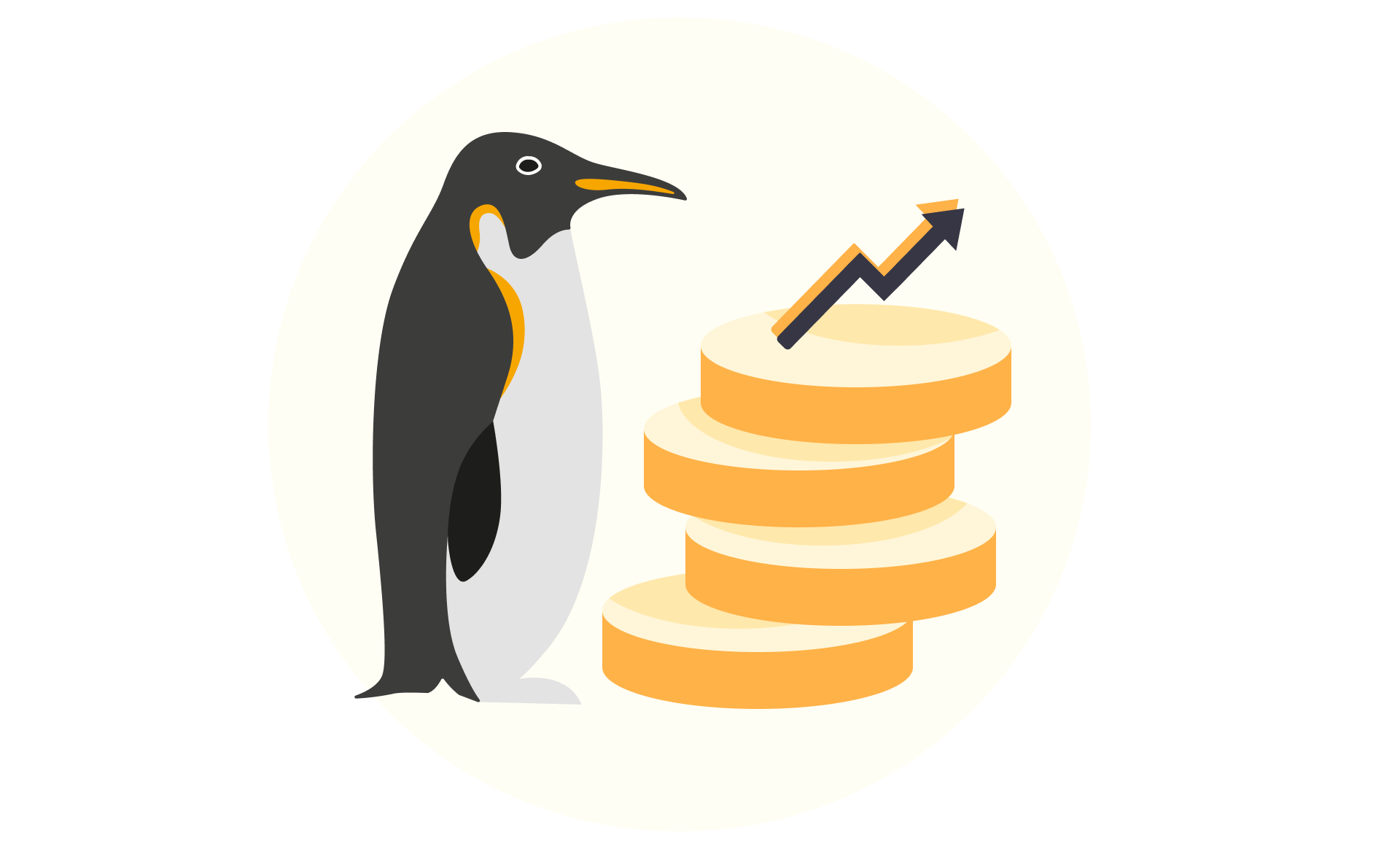
2. Subscriptions
Subscription is one of the most prevalent monetization strategies. In this model, your application is still free to download while providing a different experience to users. When adopting a subscription service, you aren’t limited to an all-or-nothing approach.
Usually, subscription-based products provide access to all or some features for a specific time. Once the period is over, customers have to pay a fee to keep using the application. Hence, users can test your product and discover its advantages before purchasing. After a free period, it might be tough to refuse all advantages the product has.
Depending on your product’s offering, you may set up several subscription packages that provide different values: free, basic, and premium service. It typically works well for online publications, entertainment, streaming, and other service-based applications.
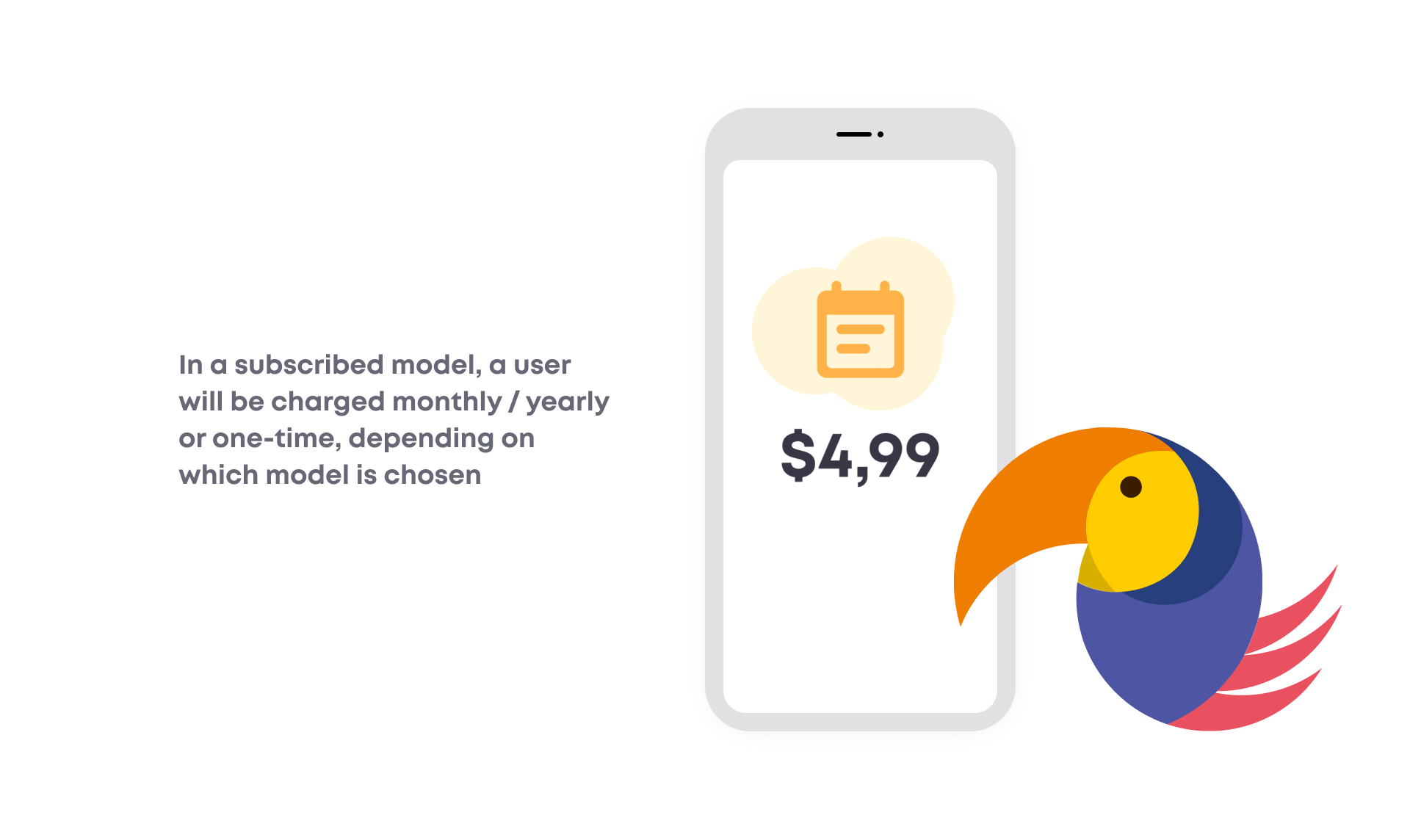
3. Paid mobile apps
Once paying for downloading apps was the only way to monetize them. It’s the oldest yet still money making model. Consumers pay once when they download and instantly get access to the product’s full functionality.
Users are often not ready to buy an application, especially when the market is congested with free alternatives. So if you want to make a profit, you need to roll up your sleeves and prepare for hard work.
This revenue strategy requires a thorough investigation of the market, an exceptional listing, strong marketing campaigns, and excellent reviews to convey the product’s value over similar free alternatives.
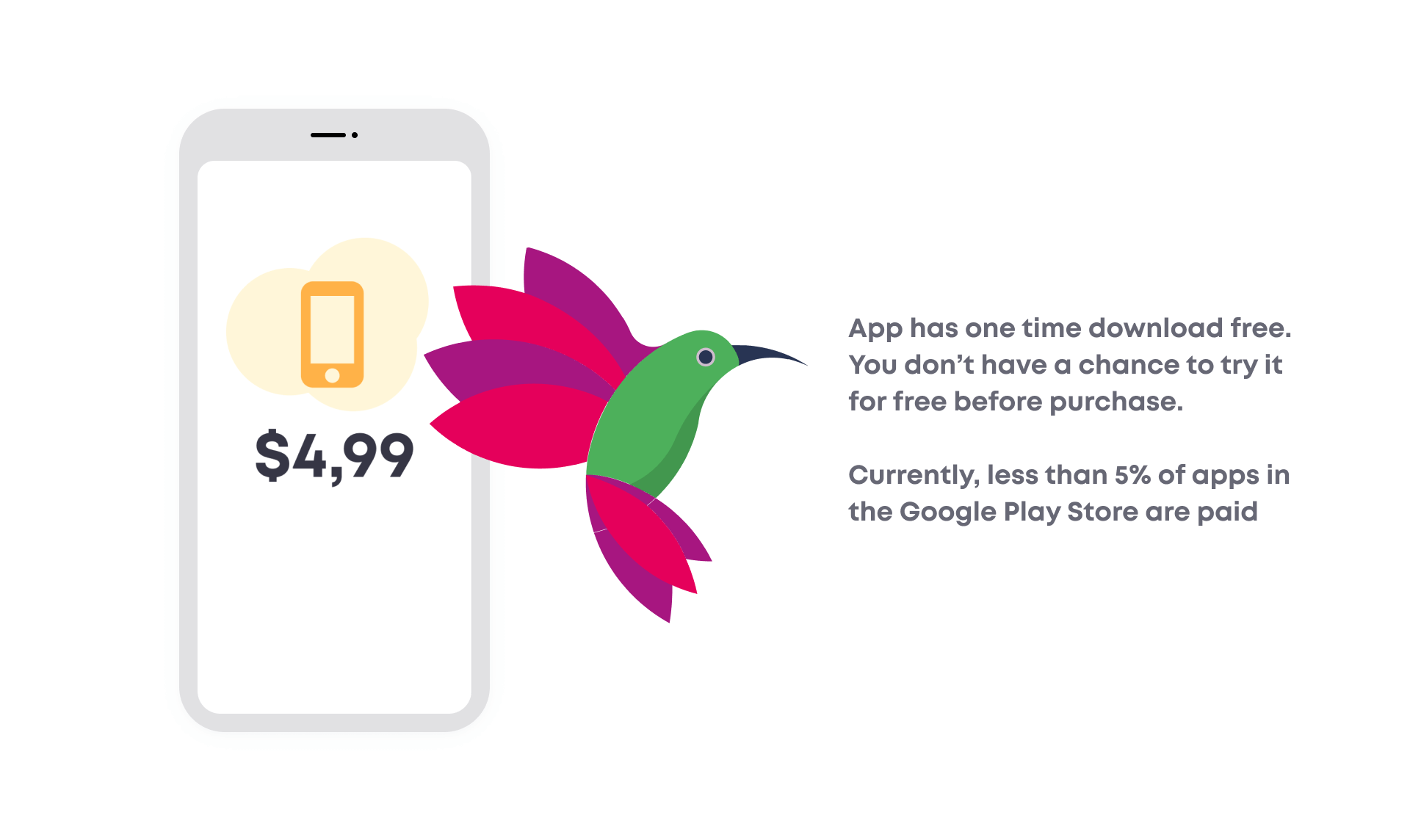
4. In-app ads
Mobile adtech is gaining momentum, and many companies are increasingly jumping to this mainstream monetization method used in different Android and iOS apps. These days, 51% of ad investments head towards mobile and will only increase in the future.
The model implies that app owners receive money for displaying sponsorship ads in their applications. So you can generate income by renting space in your application even if your product is free.
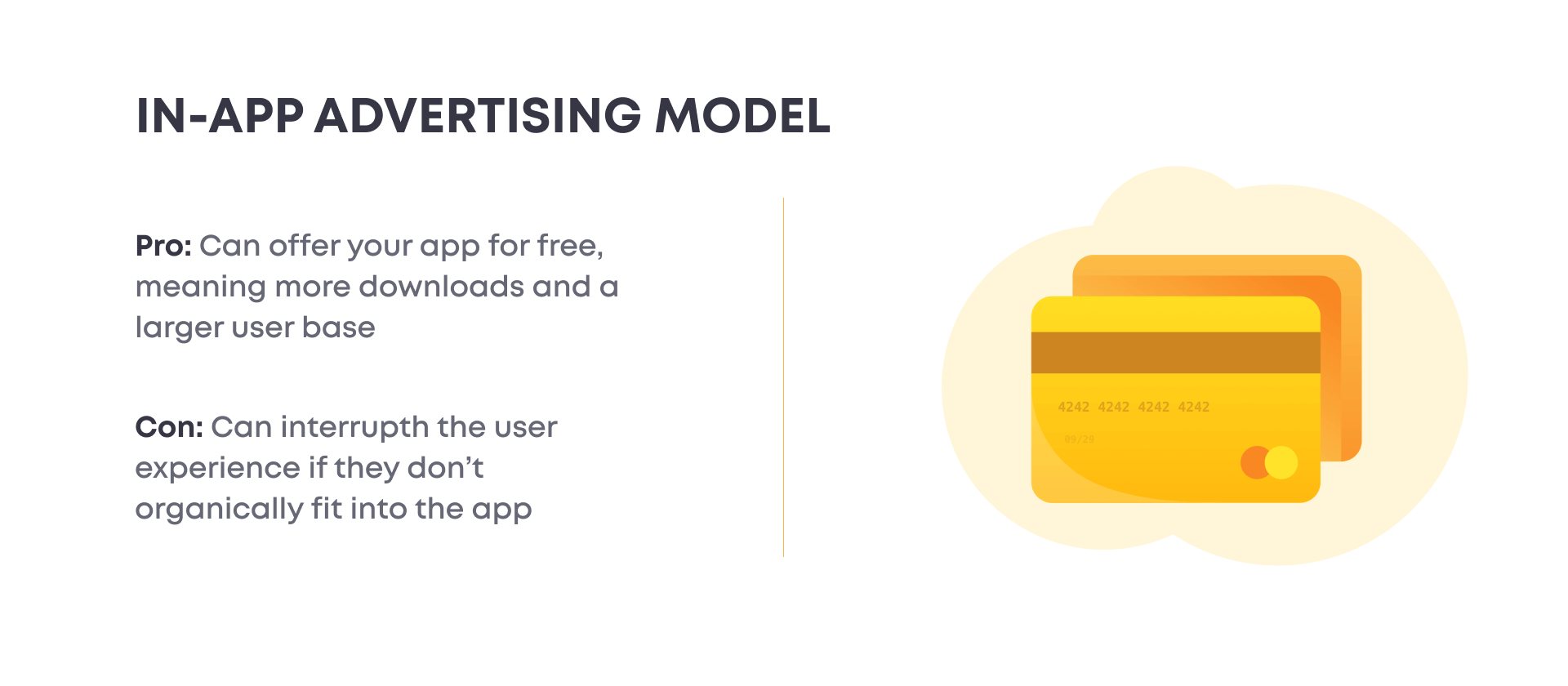
Let’s take a look at several most commonly used ad types:
Interstitials
- These are full-screen ads that appear between user flows. For example, when a page loads or pauses between levels in a game, including an image, video, and text. This type of ad is the most intrusive. However, it catches the attention, and if employed strategically, you’ll get the most out of it.
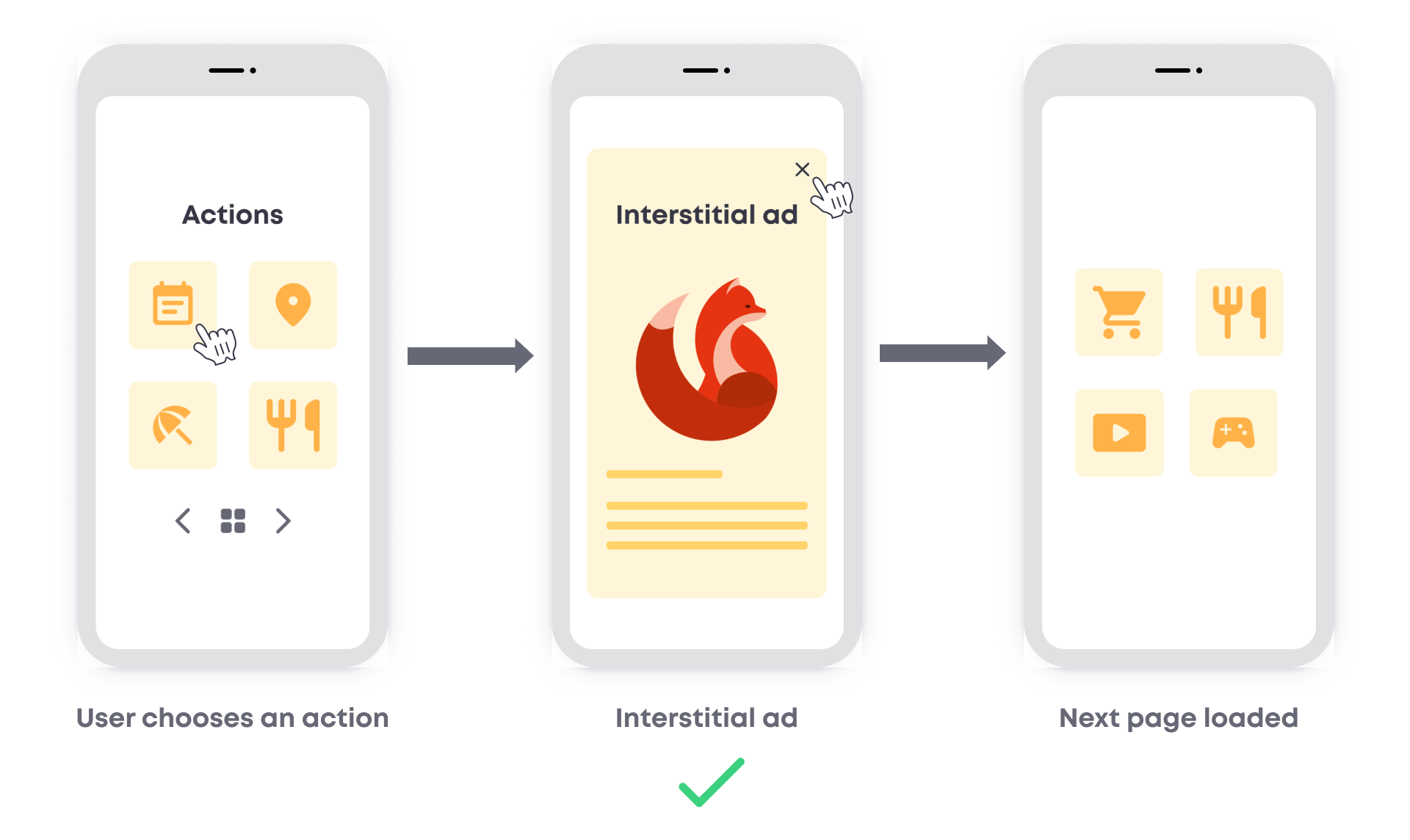
Native ads
- These ads are tailored to the app’s type and functionality and look like well-crafted posts in your feed. You can see such a model when using Facebook and Instagram. This advertising format is the most unobstructed and perfectly fits your app’s content, and looks organic.
Native ads become more popular yearly because they get 53% more views than interstitials or typical ads and boost purchase intent by a whopping 18%.
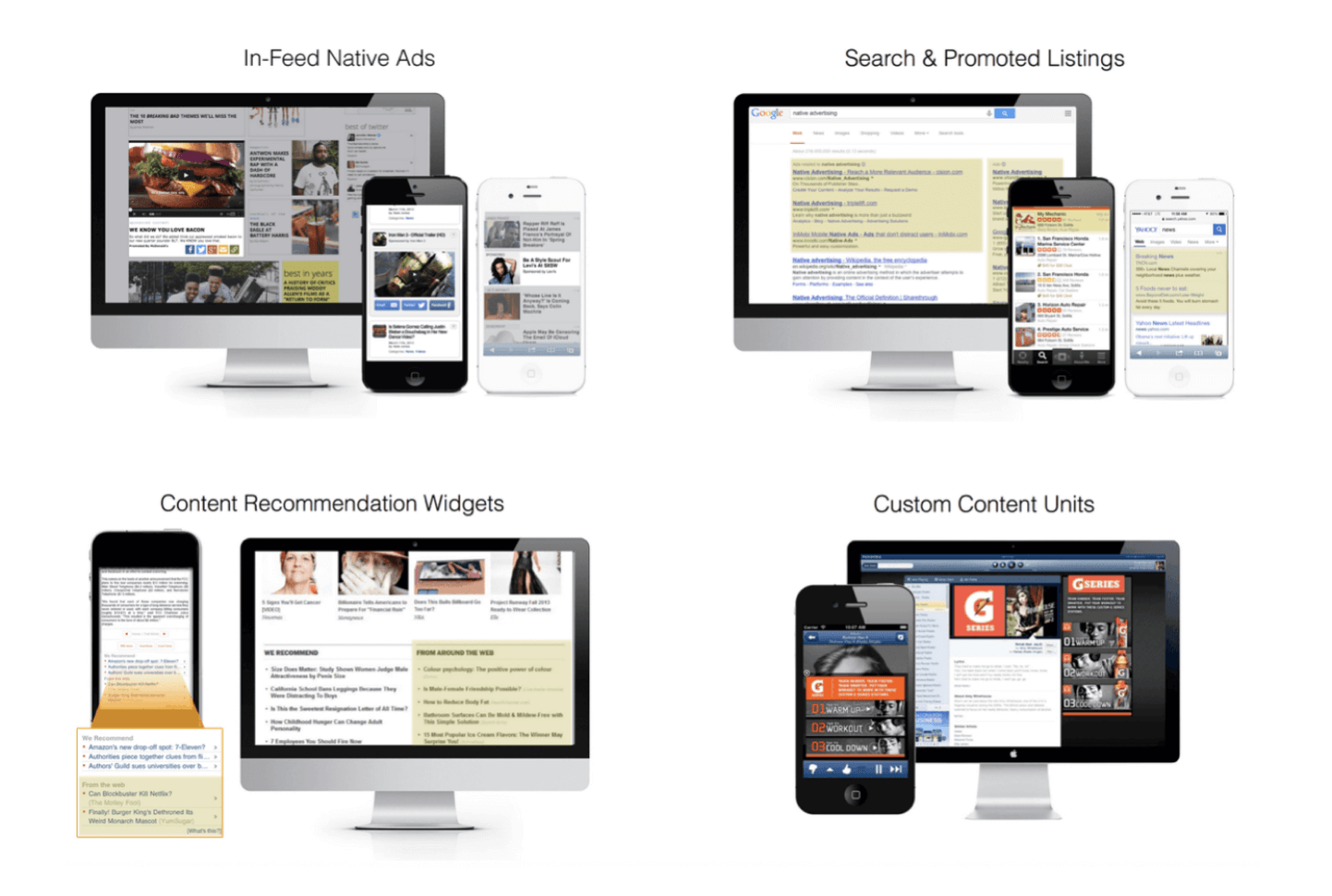
Playable ads
- This promising advertising format, a blend of interactivity and gamification, will become increasingly popular. It allows users to enjoy a demo of the promoted product before installing it from the store. Playable ads are a powerful and highly converting option. Since users who have already spent money on some kind of application are likely to be a high-quality audience for similar apps.
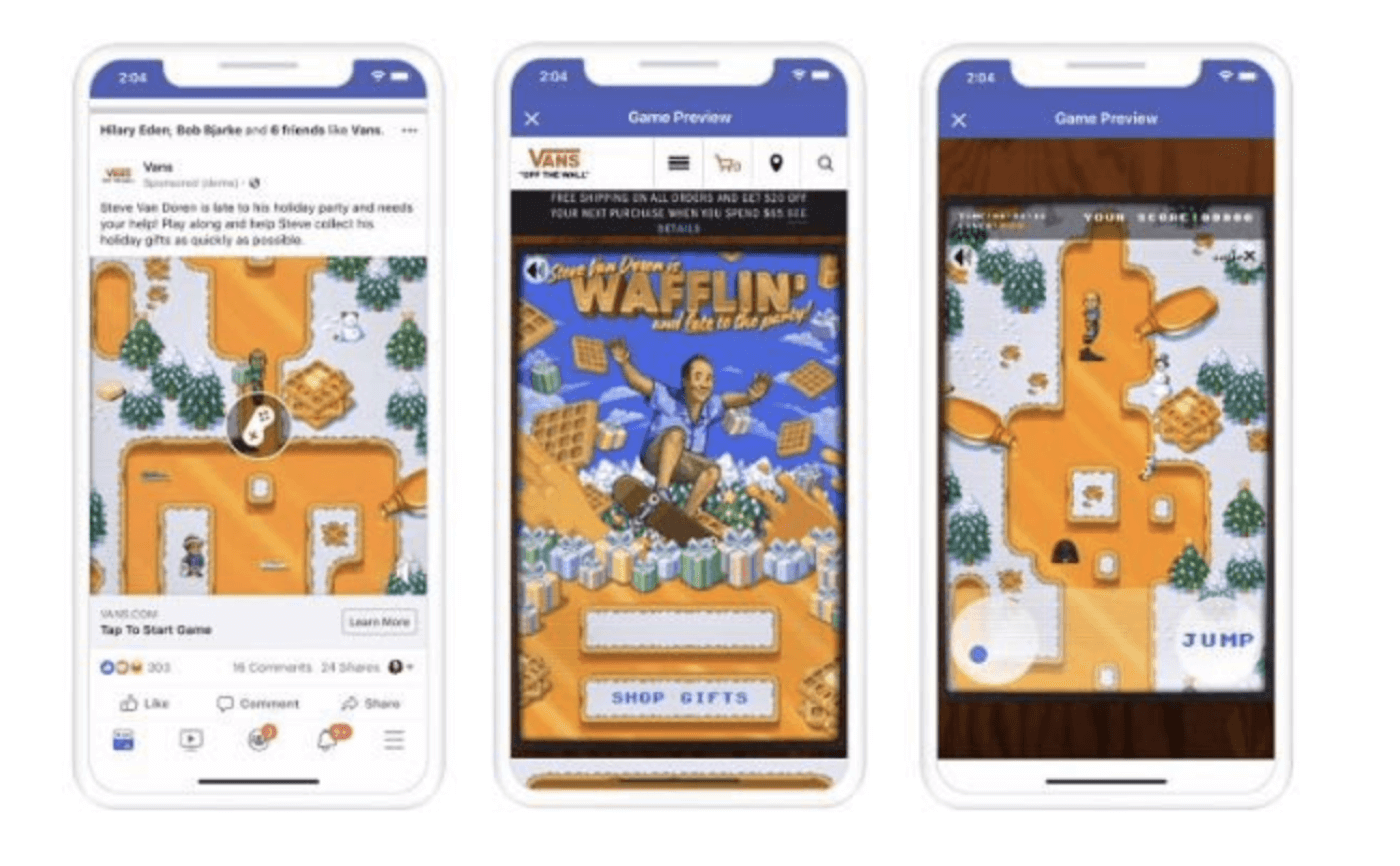
Video ads
- We all experience this ad format when watching videos on YouTube, during, or after streaming content. A brief full-screen ad, usually up to 20 seconds, presents an advertised product and provides a direct link to download it. This engaging advertising format can improve your reach and overall effectiveness with campaigns.
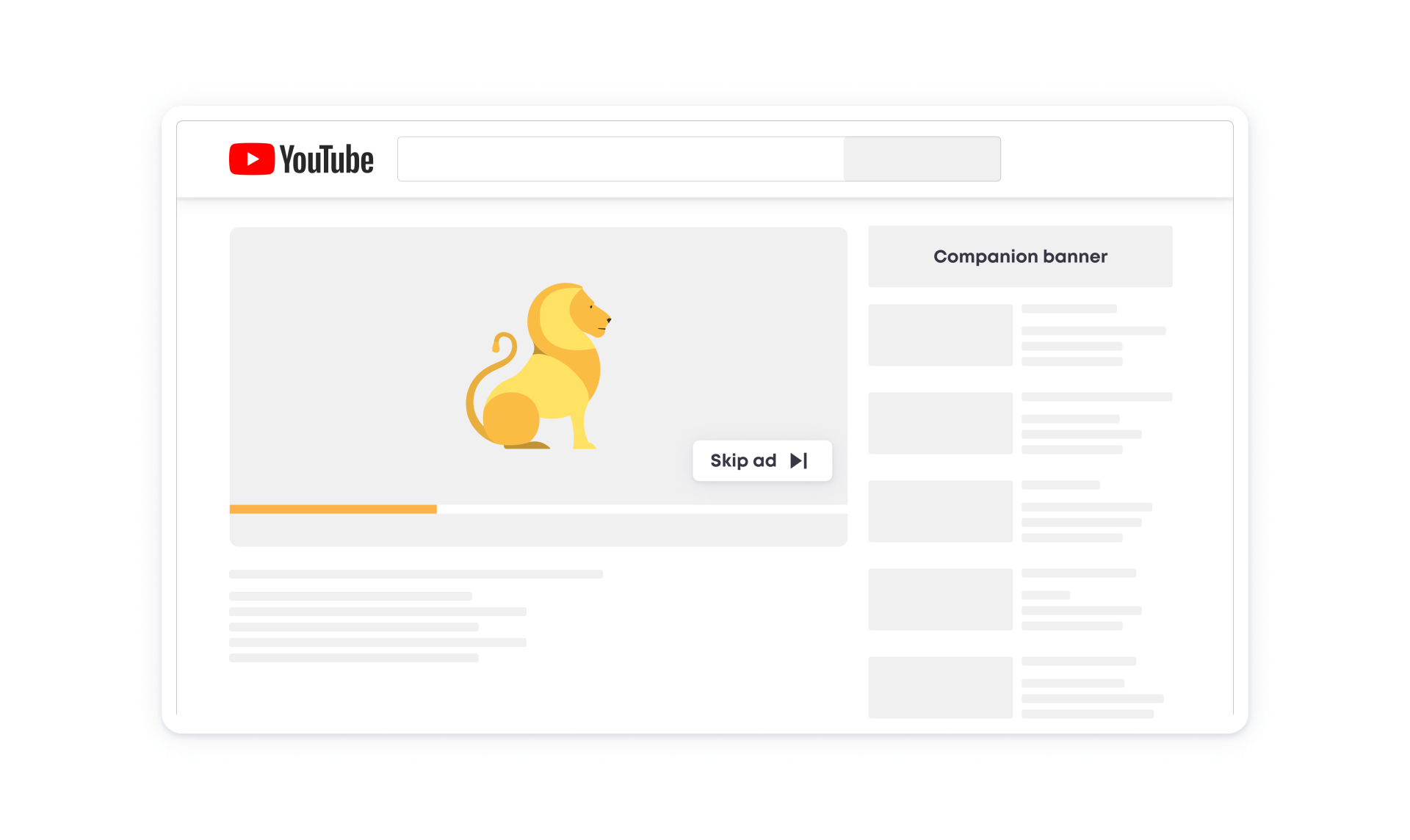
Reward ads
- App owners opt for rewarded video as one of the most effective ad formats. This strategy gives rewards for watching advertising videos. The reward can be an extra life in a game, 15% off, bonuses, or anything relevant to your user base. It’s a great incentive to make your customers watch ads while providing them with positive and immersive experiences.
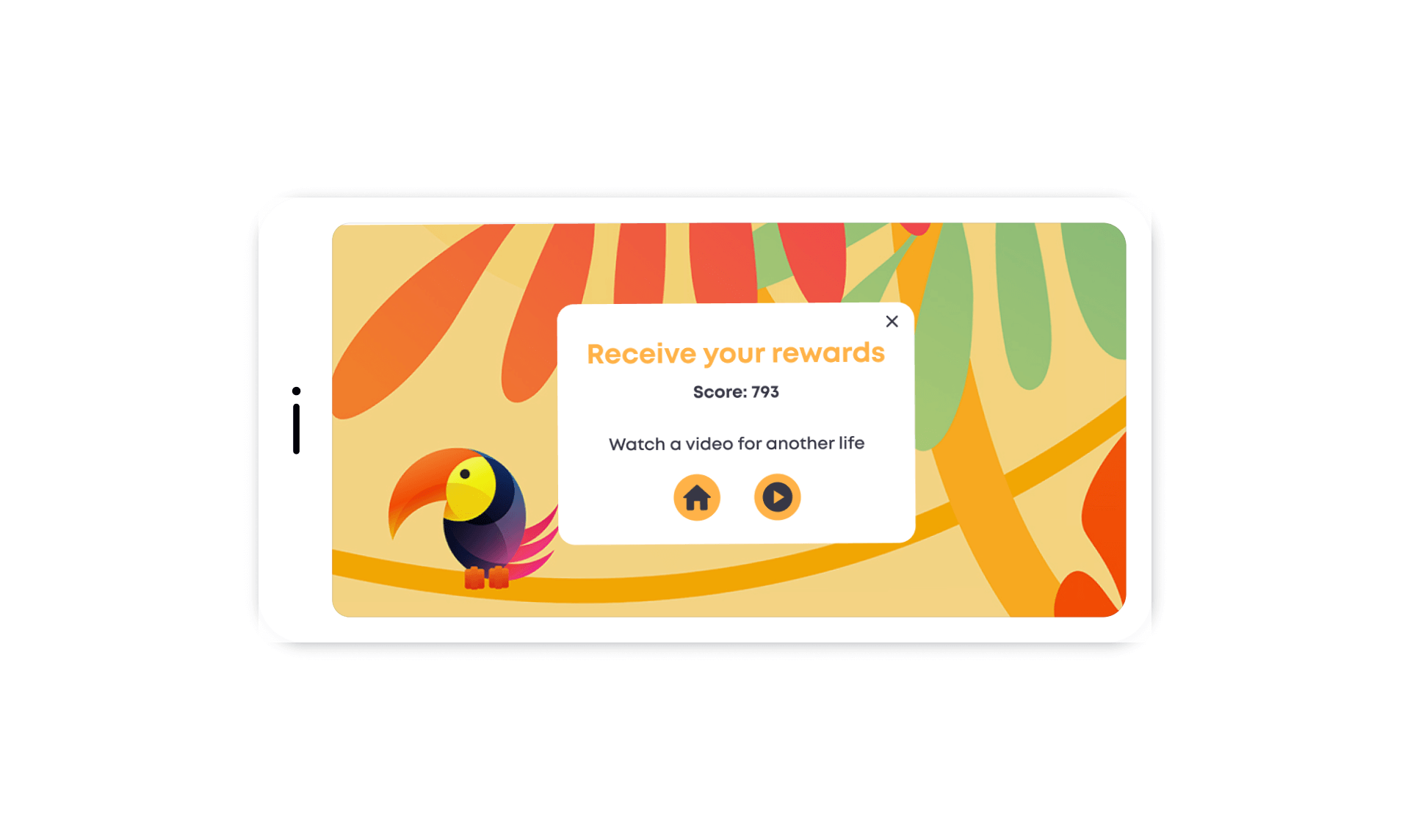
5. Freemium and premium models
Freemium is among dominating monetization strategies along with subscription and advertising used by app developers and publishers. A freemium service offers a free download while keeping additional features behind a paywall.
Users can test-drive the application in the basic format with feature limitations. Your task here is to demonstrate that the best functionality is accessible by buying the premium version. This approach extends the audience reach and increases the number of downloads. Freemium applications build trust by showing value and quality without requiring anything from the user.
Freemium works best if:
- The app is simple to use
- There is a large potential market
- Usefulness increases with more users
Premium works best if:
- The app has many features
- The market is niche
- Support costs are high
6. Affiliate marketing
Amazon invented the affiliate marketing model implementing the affiliate programs on their marketplace. Now it’s a reasonably widespread and efficient approach to generating income.
What is an affiliate program? You refer customers to other applications, products, or services by advertising them through your application. If people are interested in what they see and buy the product, you get a commission of the sales you referred. Most app owners opt for affiliate marketing schemes as a form of passive income.
Find the hottest apps, promote them in your product and get the ease of generating revenue with this monetization method.
Amazon invented the affiliate marketing model implementing the affiliate programs on their marketplace. Now it’s a reasonably widespread and efficient approach to generating income.
What is an affiliate program? You refer customers to other applications, products, or services by advertising them through your application. If people are interested in what they see and buy the product, you get a commission of the sales you referred. Most app owners opt for affiliate marketing schemes as a form of passive income.
Find the hottest apps, promote them in your product and get the ease of generating revenue with this monetization method.
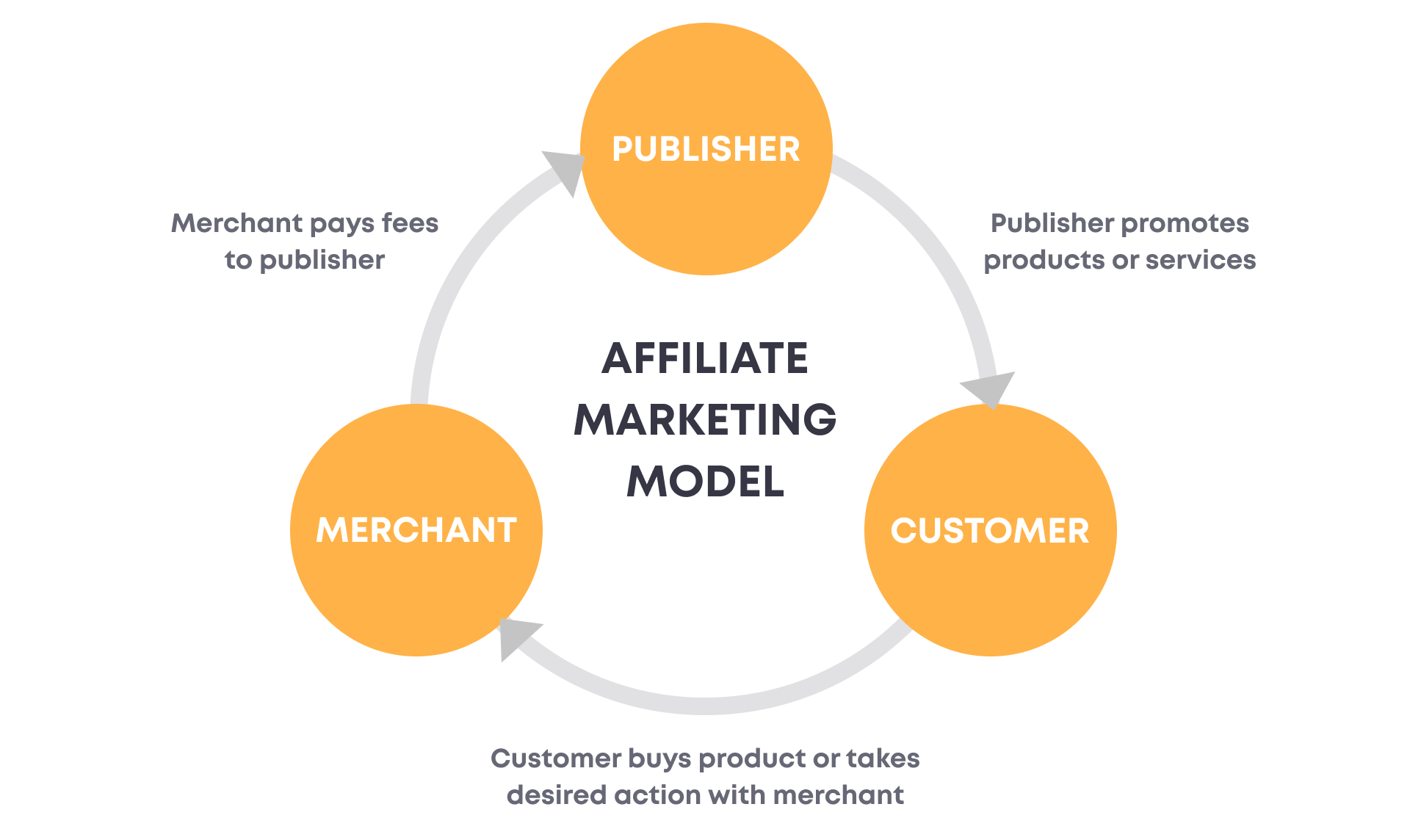
7. Loyalty programs
A loyalty program increases the attractiveness of the brand and consequently a base of clients. Loyal clients tend to purchase more frequently than others as they represent a high trust and are more willing to buy products with high markup from other categories or reach for exclusive products. Hence, loyalty programs developed specifically for your product will help build a loyal customer base and increase direct sales.
Discover how a loyalty program developed by the ORIL specialists helped our client gain customers on our Portfolio page.
8. Hybrid monetization model
A hybrid approach may be best for your application if you want to squeeze the most profit out of monetizing. You can combine different models alongside each other. After all, paid applications could still have a subscription package. For instance, using in-app purchases will help you drive up significant revenue, while in-app advertising will allow you to profit off non-paying users at the same time.
Just be sure that doing too much won’t affect the user experience. Using all models in a single application can be off-putting to consumers. Instead, decide on a few effective options to bring in revenue consistently.
Best practices for product monetization
It’s essential to keep your eyes open for the best application monetization practices and market trends. Here are the most important things to notice when introducing any methods you choose to monetize your app.
Prioritize user experience
Although monetizing your application is a priority, there is an area where you can’t afford to jeopardize – user experience. You’ll do more damage to your monetization by implementing a strategy that deteriorates the user experience.
If you want your product to survive eventually, it’s crucial to build trust with your customers and keep them satisfied. A clean app’s experience increases user engagement and encourages customers to spend more time on your app. This ultimately leads to better monetization.
Combine multiple revenue sources
Blending several models should consider different segments and ensure the monetization mechanics speak to each user type. This way, it helps you monetize more users.
Having multiple web app monetization strategies in place not only acts as a safety net for you but also offers users the choice on how to utilize your application.
The key is to achieve the right balance with high overall product engagement and success in monetizing your consumers.
Grow ad revenue with rewarded video
This ad format substantially outperforms others. It adds gamification to the user experience and incentivizes them to watch ads because they will receive a reward for their time.
The reward may come in the form of an extra life or virtual currency. For non-gaming applications, incentives could vary from a free trial, access to premium content, or any other type of free top-level feature for a limited period. Moreover, this ad format naturally fits in with in-app purchases and can help increase them.
A significant benefit of this method is that the rewarded ads are opt-in, meaning users can avoid watching advertisements if they aren’t interested in the rewards.
Customize offers and ads
Irrelevant ads can ruin the users’ mobile experience, hurting the app owner in many ways. Hence, there’s a dire need for relevant, customized advertising. Many app owners are adopting AI algorithms to show personalized ads.
The same user-centered approach should be applied to your offerings. New users and high-value users might find different things valuable. That’s why you need to customize your value propositions based on the user type.
Use tools to support your efforts
There are numerous mobile app monetization ideas and even more tools to help you do it. Specific digital tools will enable you to optimize your strategies, gather essential data to inform your positioning, create personalized customer experiences, and grow your application online.
Track your monetization
Measurement, optimization, and adjustment are vital aspects of any application monetization strategy. Always measure what makes your product work and improve in areas that need extra attention to satisfy and engage your users.
Ensure that your monetization partner can deliver in-depth insights on revenue, downloads, users, and geography. Always stay on the alert to readjust your strategy based on received data. You should experiment since there is no one-fits-all solution.
How to choose the right model that fits your app
Different mobile products require different approaches for greater outcomes. Each monetization method has its strengths and weaknesses. At last, the perfect one for you depends on numerous internal and external aspects. Here are steps that will help you define a path that is perfect for your product.
1. Determine the app type and use
First and foremost, you need to consider what your application does. What is the purpose of your product, and what problem does it solve? Decide how you expect it to be used as particular app types work better with specific monetization methods. You can explore similar products at mobile app stores to get an idea of categorizing your product.
2. Study your target audience
You should know your audience. Divide your potential users into segments and define your application’s value to each segment. This will help you come up with one or several models that serve all your users. If your target audience is vast, you should consider less intrusive monetization options to avoid putting your clients off.
3. Do a competitor research
One simple way to minimize the risk of choosing the wrong or non-profitable monetization method is to learn from your competitors. That’s how you can discover what works in your industry and what your target audience is ready to pay for. The odds of excelling with a monetization strategy that already runs smoothly for your competitors are very high. Thorough research helps you avoid mistakes and enhance the tried and proved models.
With all of this in place, you’ll be ready to build a stable and effective monetization strategy that will bring your business revenue.
How to assess app monetization success
Once you’ve selected the fitting monetization model for your app, it’s essential to evaluate the performance continually to identify what’s working and what’s not.
Here are some critical performance indicators and revenue Key Performance Indicators to optimize your strategy:
- Overall app usage
- Retention and abandonment rates
- Active users
- Length of sessions
- Average revenue per user (ARPU) will give you a rough idea of your app’s monetary value.
- Customer acquisition cost (CAC) includes advertising, labor, and other related costs spent on acquiring a customer.
- Customer lifetime value (CLC) measures the net profit customers generate, including customers in and on the platform in ratio to the cost of acquiring them.
- Return on investment (ROI) is measured by dividing the generated revenue by costs spent on marketing and other expenses incurred.
Use these metrics to assess your product monetization strategy’s success and improve revenue generation and user acquisition.
Final thoughts
We hope that you now have a better understanding of how app monetization works and build a strategy where profit-making and user experience are well-balanced.
We have developed mobile applications and created successful monetization models for different products and industries. The best advice we can give is to constantly analyze your niche, study your users, and focus on your product strengths. This way, your customers will be happy to pay for all the benefits you offer. Drop us a line, and we will help you implement a model that will propel your project to the next level.
